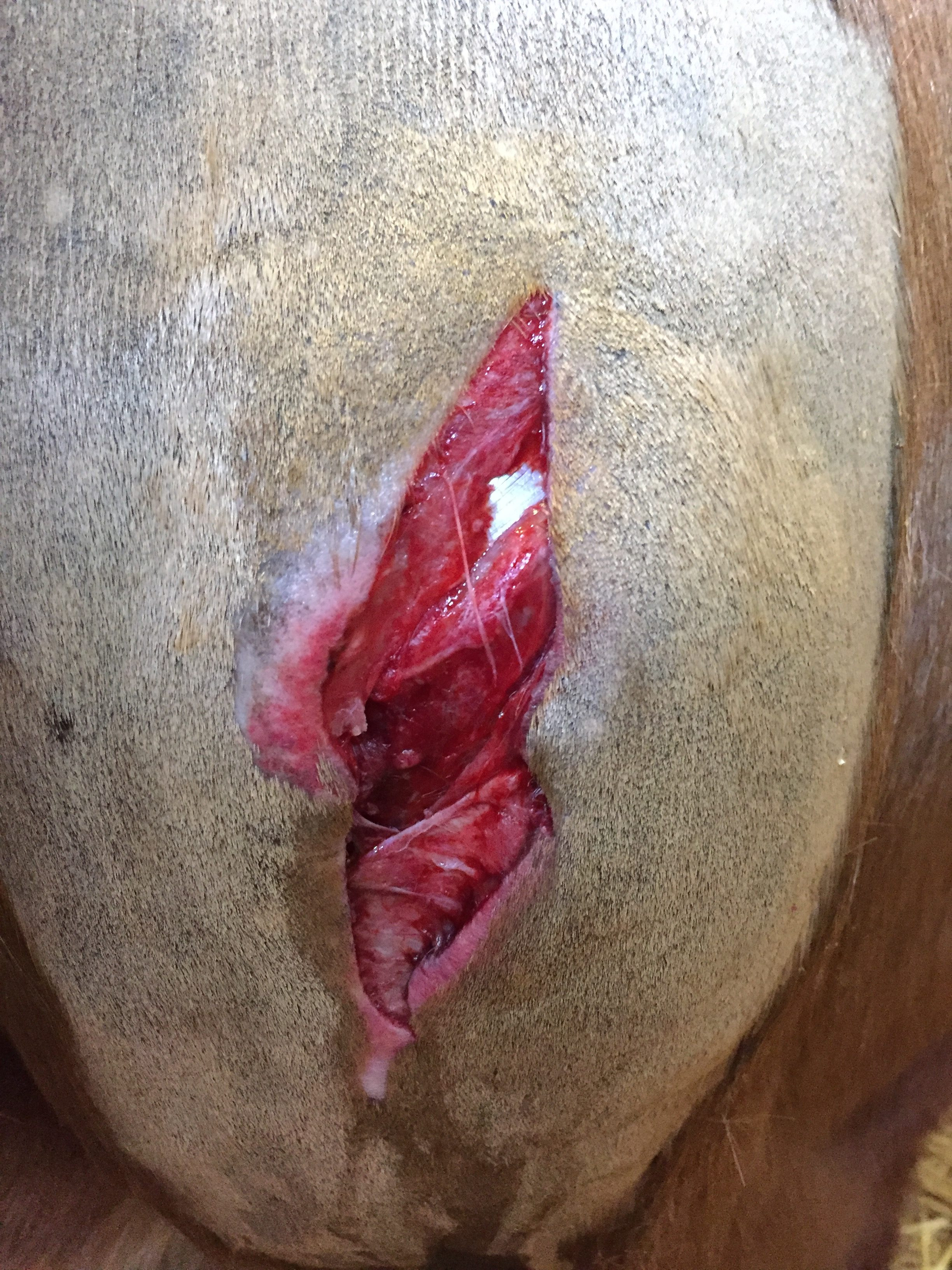This week we have had for our Autumn Client Talk on wounds and first aid and I've been reflecting on the wounds I have attended this year. I am fairly sure that many owners probably don't realise that what they do to the wound prior to the vet arriving on the scene can have a dramatic effect on the outcome. While we have some great tips on what you SHOULD do, I think what you should NOT do is far more important. So here goes...
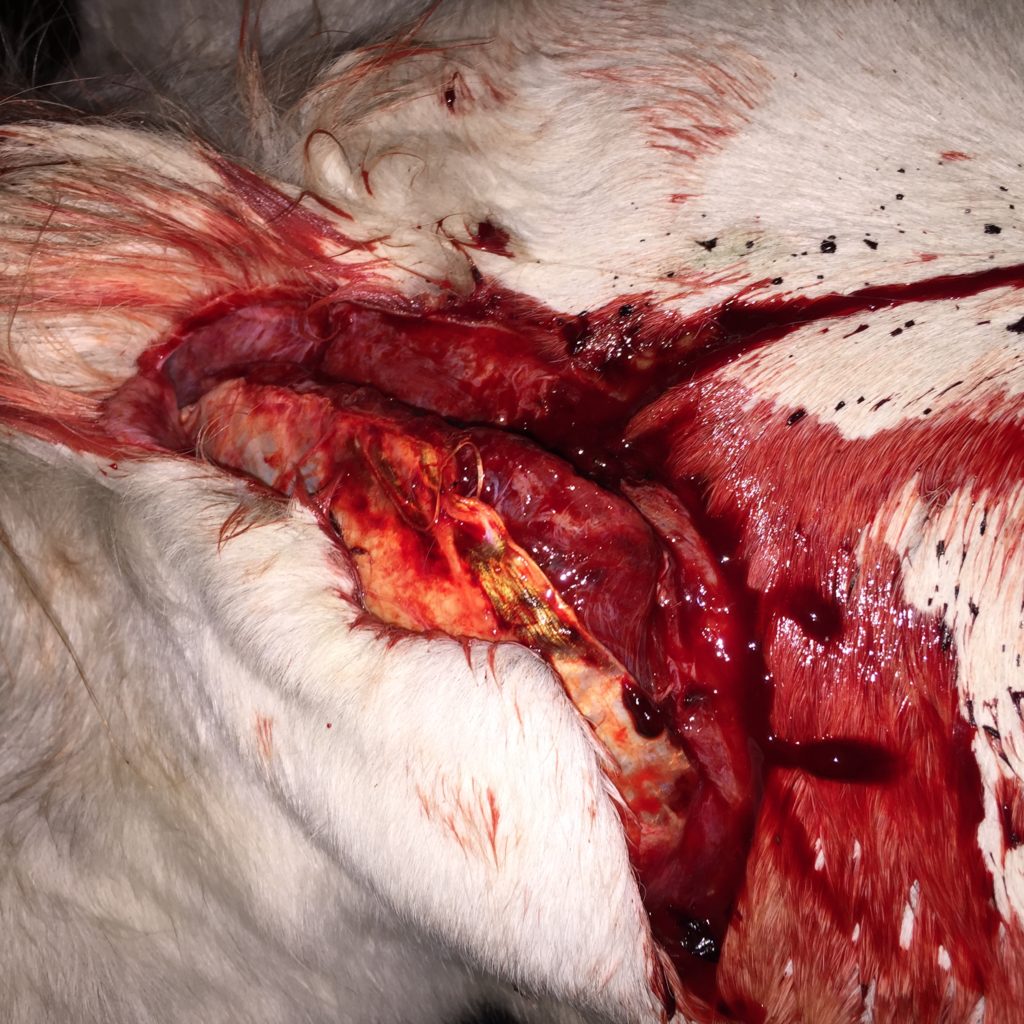
- Do NOT apply any of the following to a wound prior to it being assessed by your vet:
- Purple Spray
- Silver/Aluminium Spray
- Blue Spray
- Wound Powder
- Iodine
- Hibiscrub
I can't tell you how much my heart sinks when I arrive to see a horse with a wound only to find the owner has covered the wound in silver spray, purple spray or wound powder.
If you own purple spray or wound powder throw it away - please!!! These products have no place in wound care and will negatively impact on wound healing.
Any powder or thick coloured spray will really interfere with how we assess the wound, the colour of the tissues and any discharge is vitally important in our decision making and can literally be life or death for some wounds.
I'd far rather see a wound as it was found than try to assess one covered in tack shop gunk. Most wound things from tack shops are marketing gimmicks and are at best completely useless and at worse harmful. We'll cover what I advise to use at the talk and in a later blog but nothing is better than something in the case of the above products.
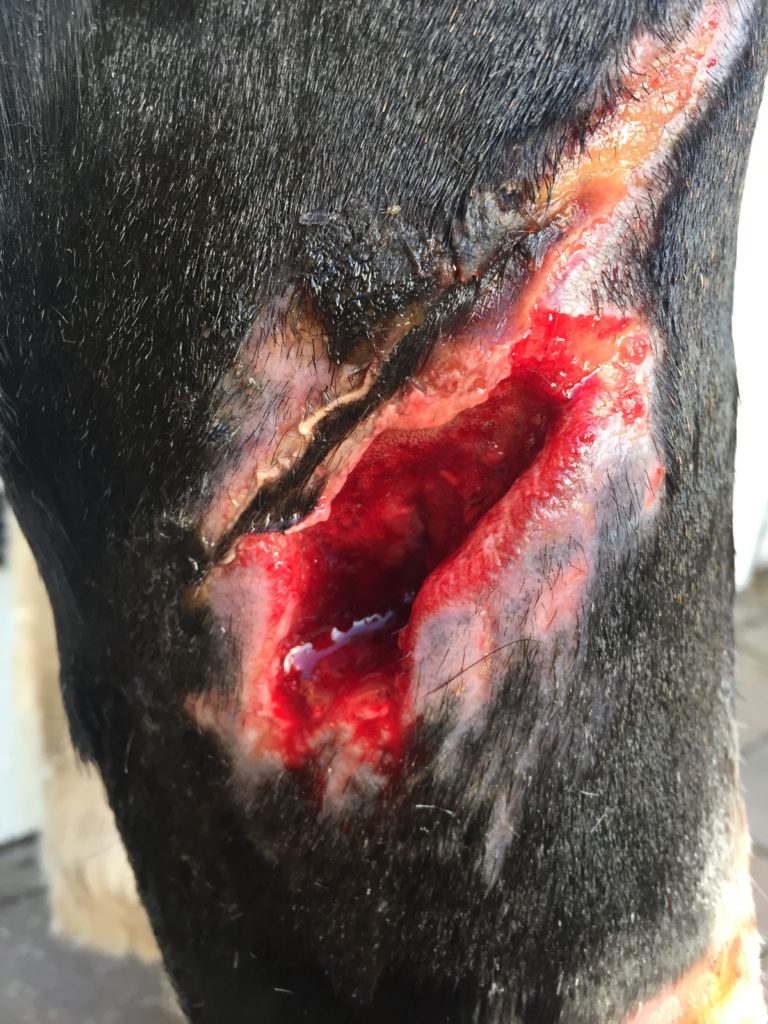
2. Be careful cleaning wounds with a hose pipe! If a wound is very dirty then cleaning it as much as you can before the vet arrives is a good idea, however for deep wounds and especially puncture wounds or wounds with pockets like the one to the right then there is a risk that you may force dirt and bacteria deep into the wound hugely increasing the risk of infection. If in doubt wipe as much dirt off as you can and leave the rest of the cleaning for the vet.
3. Do NOT give your horse any form of pain relief such as 'bute' until the vet arrives. It is my worst nightmare when I arrive to assess a horse that has had 'two bute' 30 minutes prior to be getting there. Why? Because assessing the level of lameness is one of the most important parts of the veterinary examination. To an owner, it may look like a small puncture wound or nick, but if the horse is severely lame the chances are there is something more serious happening such as an infected joint or a fracture.
I still have nightmares about two horses I have seen in the past that had wounds on their front legs that were given bute by the owners, one while waiting for a vet (me) and one instead of calling a vet. As soon as the pain relief kicked in those horses walked around and their bones literally snapped. Both were humanely euthanised. Chances are they had hairline fractures and due to putting too much weight on the leg the hairline fractures gave way. Both could potentially have been saved by appropriate assessment and splinting prior to the catastrophic events that occurred. Both had small innocent looking wounds but were very lame - be warned!
4. Do NOT apply a bandage too tight!
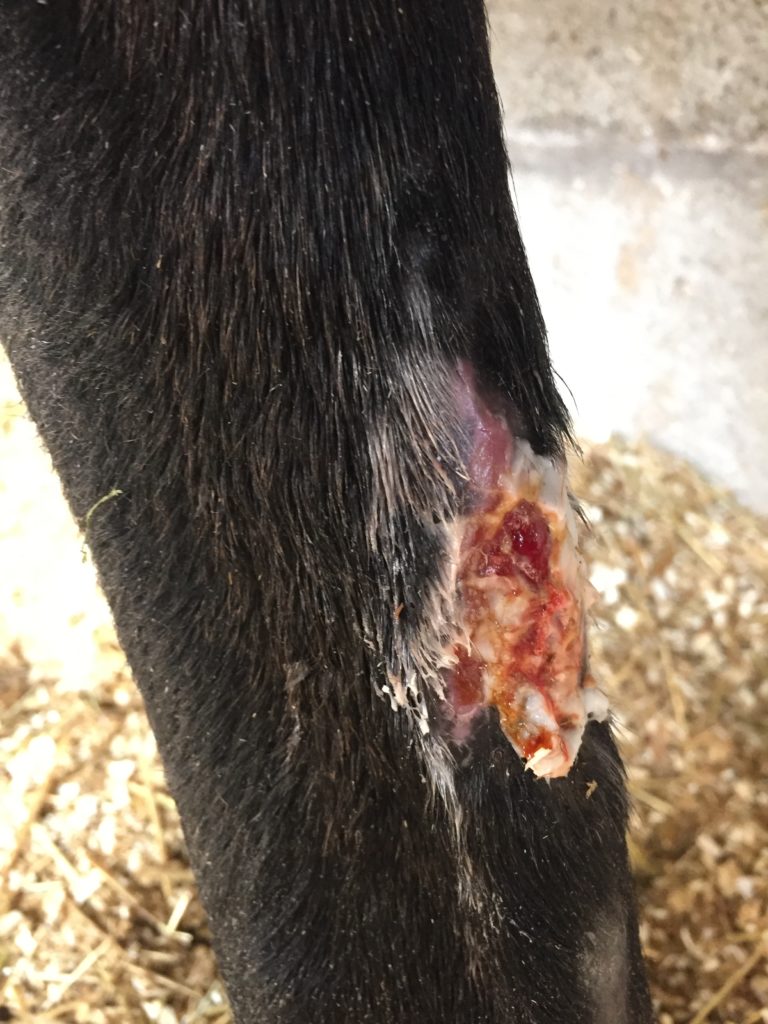
Most significant wounds we examine require some sort of bandage. However, a poorly applied bandage can cause more harm than the original injury (and scar much worse). It is really important if you bandage your own horse that you take the time to learn how to do it properly. The most common mistakes are the bandage being too tight, not applied to the correct amount of the leg (too short or too long or finishing too close to a joint) or inappropriate bandage materials or the wrong order of materials. Some thin skinned horses or horses with long term bandaged limbs will develop bandage sores no matter what we do but its important to do our best to minimise the risk. The wound in the picture is a bandage sore, as you can see it is very deep. These sores occur due to loss of blood supply to an area of the leg followed by death of the tissue.
5. Do NOT remove penetrating objects!
It's so tempting to do, but please do not remove anything sticking out of your horses wound. The most common ones are a piece of fence/wood/tree, nails/screws (usually in the foot) or a thorn (unless very small and not near a tendon or joint). It is vitally important that the attending vet knows exactly where the object was penetrating, how far in and at what angle. If we are concerned we will usually radiograph or ultrasound with the object in place prior to removing it to fully understand where it has penetrated. Another risk of pulling it out it breaking it and leaving some in the wound.
6. Do NOT wait to call the vet.
Wounds tend to bring everyone on the yard over to have a nosy and pass their opinion. No doubt if you're on a livery yard you'll hear more than one (more likely at least 3!) different opinions on what you should do with the wound. I've heard them all... 'just put some turmeric on it'...…. 'I wouldn't call the vet if that was my horse'...…. 'It's only a scratch'...…..'I've got some (insert name of expensive and probably useless ointment) you can borrow'....'Give it two bute'......
Every year horses die because owners delay calling a vet ….FACT! I'm not worried about the wounds like the one in the picture below, you'd have to be a bit bananas not to call a vet to deal with that. I'm far more worried about the smaller wounds that perhaps look more innocent. The most deadly wounds we see are never the most dramatic, these are the wounds involving joints and tendon sheaths, often smaller than your finger nail or the wounds when the horse also has a fracture. If in doubt phone us. We exist to help you with your horse, we're a valuable resource of information and can help you do the right thing for your horse.
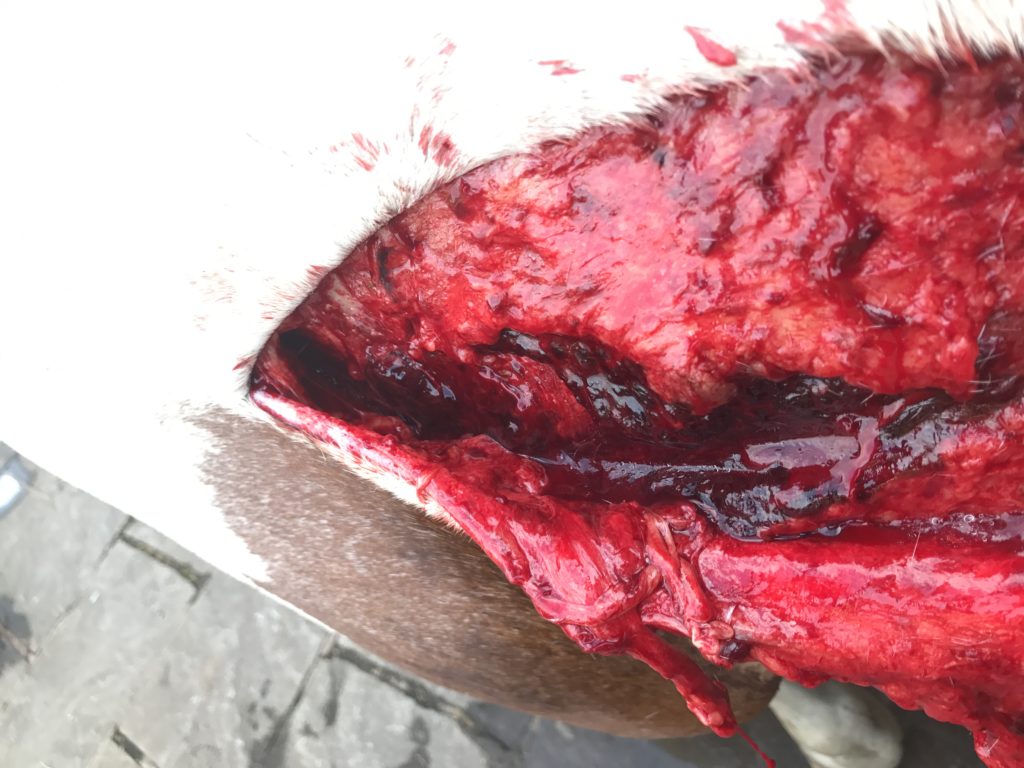
Thank you for reading this blog! Now go and throw your wound powder away!
Jenny x
Senior Vet, Ridings Equine Vets Ltd
